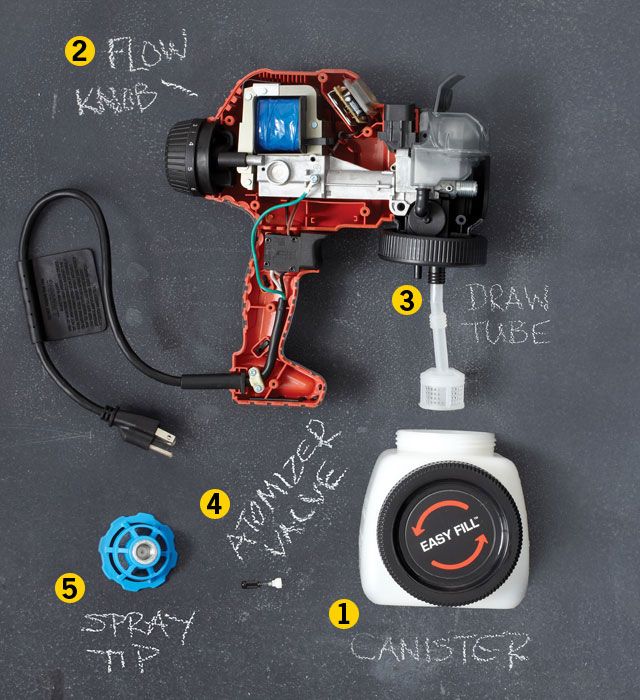How Does Airless Paint Sprayer Work
Painting can be a tedious and time-consuming task, especially when using traditional methods like brushes or rollers. Fortunately, there is a more efficient and effective way to paint, with an airless paint sprayer. An airless paint sprayer is a powerful tool that uses a high-pressure pump to atomize paint into small droplets and apply it evenly to a surface. This results in a faster painting time and a higher-quality finish than traditional painting methods.
In this article, we will explore how an airless paint sprayer works, the different components that make up an airless paint sprayer, and the advantages of using one for your painting projects. We will also discuss the types of paint suitable for airless paint sprayers, tips for using them effectively, and answer frequently asked questions.
Get the Fail-Safe Paint Color Playbook (Free PDF)
36 proven colors • 8 ready palettes • trim & sheen guide • printable testing cards.
Whether you are a professional painter or a DIY enthusiast, understanding how an airless paint sprayer works is essential for achieving a professional-quality finish. With the right knowledge and approach, you can make the most out of this powerful tool and enjoy a faster, more efficient painting process. So, let’s dive into the world of airless paint sprayers and discover the secrets of this impressive technology.

Components of an Airless Paint Sprayer
An airless paint sprayer comprises several components, including a high-pressure pump, a motor, a spray gun, a paint hose, a pressure gauge, a tip guard, and a paint filter. Each of these components works together to pressurize the paint and atomize it into small droplets, which are then propelled out of the spray gun and onto the painting surface.
How Does an Airless Paint Sprayer Work?
An airless paint sprayer works by using a high-pressure pump to pressurize the paint. The pump draws the paint from the paint container and pushes it through the spray hose to the spray gun. The pressure of the pump causes the paint to atomize into small droplets, which are then propelled out of the spray gun and onto the painting surface.
The spray gun contains a nozzle that can be adjusted to change the width and shape of the spray pattern. The pressure gauge measures the pressure of the paint as it flows through the system, and the tip guard protects the nozzle from damage.
Advantages of Using an Airless Paint Sprayer
One of the main advantages of using an airless paint sprayer is that it allows for faster painting times and better coverage. As the paint is atomized into small droplets, it is applied more evenly to the surface, resulting in a higher-quality finish. Additionally, airless paint sprayers are versatile and can be used for a variety of painting projects, including large-scale exterior projects.
Types of Paint Suitable for Airless Paint Sprayers
Airless paint sprayers are suitable for use with a variety of different types of paint, including latex, oil-based, and other types of paint. However, it is important to choose the right type of paint for the project and to prepare the surface properly before use.
Tips for Using an Airless Paint Sprayer
To get the best results with an airless paint sprayer, it is important to follow a few tips. Firstly, it is essential to prepare the surface before painting, by cleaning it and filling in any cracks or holes. Secondly, it is important to use the right type of paint for the project and to mix it thoroughly before use.
When using an airless paint sprayer, it is also essential to wear protective gear, such as gloves and a mask, and to use the spray gun at the correct angle and distance from the surface. Finally, it is important to clean and maintain the spray gun and pump regularly to ensure that they continue to function properly.
Frequently Asked Questions
Q: What is the best way to clean an airless paint sprayer?
A: To clean an airless paint sprayer, flush the system with water or a cleaning solution, and run it until the liquid runs clear. Clean the spray gun, hose, and other components with a brush or cloth, and store them in a dry place.
Get the Fail-Safe Paint Color Playbook (Free PDF)
36 proven colors • 8 ready palettes • trim & sheen guide • printable testing cards.
Q: What is the best tip size for an airless paint sprayer?
A: The tip size for an airless paint sprayer depends on the type of paint being used and the project’s requirements. As a general rule, larger tip sizes are suitable for thicker paints, such as latex paint, while smaller tip sizes are suitable for thinner paints, such as stains and lacquers. It is essential to consult the paint manufacturer’s recommendations for the best tip size for the specific paint being used.
Q: Can I use an airless paint sprayer for small projects?
Get the Fail-Safe Paint Color Playbook (Free PDF)
36 proven colors • 8 ready palettes • trim & sheen guide • printable testing cards.
A: Yes, airless paint sprayers can be used for small projects, but they may be less efficient than traditional painting methods. However, for larger projects, an airless paint sprayer can save time and effort.
Conclusion
An airless paint sprayer is a powerful tool that can save time and effort in painting projects. By using a high-pressure pump to atomize the paint into small droplets, the sprayer provides even coverage and a high-quality finish. When using an airless paint sprayer, it is essential to choose the right type of paint for the project, prepare the surface properly, and follow safety precautions. With the right approach, an airless paint sprayer can be a valuable addition to any painting toolkit.
